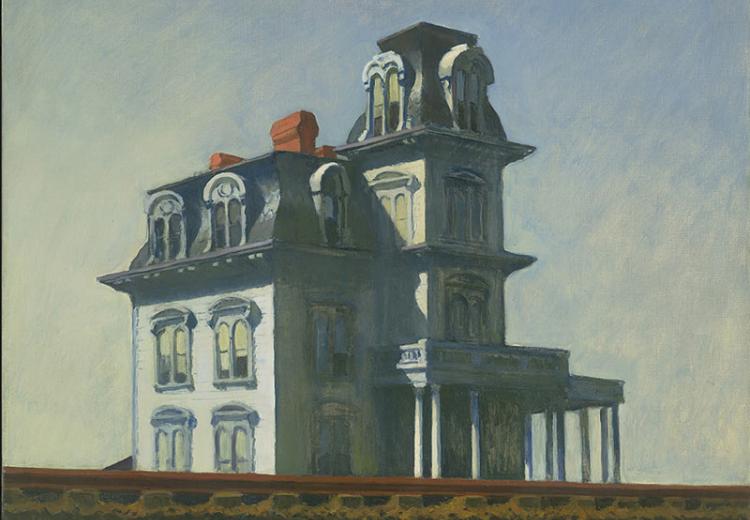Edward Hopper's House by the Railroad: From Painting to Poem

Edward Hopper (1882–1967), House by the Railroad, 1925. Oil on canvas, 24 x 29 in. (61 x 73.7 cm.). The Museum of Modern Art, New York.
"… the utterly naked look of someone / being stared at”
—Edward Hirsch, “Edward Hopper and the House by the Railroad (1925), ” from Wild Gratitude, 1986
Critics tend to see in Edward Hopper's painting and Edward Hirsch's poem two despairing views of a particular time and place in American history—the tail end of the main industrial movement in the United States—when the traffic of industry aggressively reconfigured the American landscape. Even as that traffic brought work and culture to parts of the country that either welcomed or needed them, it ravished or compelled the abandonment of others. What for some was progress, for others was decline, and what remained after the storm, so to speak, was a truly forsaken structure: Hopper's Victorian house is closed, isolated, enthroned in a seemingly permanent shadow; Hirsch imagines there "someone who is about to be left alone / Again, and can no longer stand it."
Both the painter and the writer, implicitly and explicitly, take on the artist as an additional subject in these works. Hopper does so largely through his interpretation of the scene; Hirsch includes the painter—"the man behind the easel . . . brutal as sunlight"—more explicitly; both men explore the artist's role in making the historical moment meaningful. And perhaps both succeed by offering consolation in the beauty of their forms.
This lesson invites a close reading of Hopper's painting and Hirsch's poem to explore the types of emotion generated by each work in the viewer or reader, and how the painter and poet each achieved these responses.
Guiding Questions
What does the visual evidence in Hopper's painting tell us and how has Hirsch interpreted the painting in his poem?
How does each artist interpret this moment in American history?
Learning Objectives
Observe and discuss how the forms in Hopper's painting establish tone and meaning
Analyze and discuss how Hirsch's use of diction and imagery establish tone and meaning
Place Hopper and Hirsch in some historical context
Consider how the painting and poem comment on at least one aspect of life in America
Employ both visual and verbal arts as vehicles for the student's own expression
